- Clone
- 390 (See other available formats)
- Regulatory Status
- RUO
- Other Names
- PECAM-1, EndoCAM
- Isotype
- Rat IgG2a, κ
- Ave. Rating
- Submit a Review
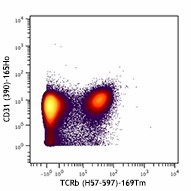
| Cat # | Size | Price | Quantity Check Availability | Save | ||
|---|---|---|---|---|---|---|
| 102425 | 100 µg | 106 CHF | ||||
CD31 is a 130-140 kD glycoprotein, also known as platelet endothelial cell adhesion molecule (PECAM-1) and EndoCAM. It is a member of the Ig superfamily, expressed on endothelial cells, platelets, granulocytes, monocytes/macrophages, dendritic cells, and T and B cell subsets, and is critical for cell-cell interactions. The primary ligands for CD31 have been reported to be CD38 and the vitronectin receptor (αv β3 integrin, CD51/CD61). Other reported functions of CD31 are neutrophil emigration to sites of inflammation and angiogenesis.
Product DetailsProduct Details
- Verified Reactivity
- Mouse
- Antibody Type
- Monoclonal
- Host Species
- Rat
- Immunogen
- C3H/HeJ mouse hematopoietic progenitor cell line 3
- Formulation
- Phosphate-buffered solution, pH 7.2, containing 0.09% sodium azide and EDTA.
- Preparation
- The antibody was purified by affinity chromatography.
- Concentration
- 1.0 mg/ml
- Storage & Handling
- The antibody solution should be stored undiluted between 2°C and 8°C.
- Application
-
FC - Quality tested
CyTOF® - Verified - Recommended Usage
-
This product is suitable for use with the Maxpar® Metal Labeling Kits. For metal labeling using Maxpar® Ready antibodies, proceed directly to the step to Partially Reduce the Antibody by adding 100 µl of Maxpar® Ready antibody to 100 µl of 4 mM TCEP-R in a 50 kDa filter and continue with the protocol. Always refer to the latest version of Maxpar® User Guide when conjugating Maxpar® Ready antibodies.
- Application Notes
-
Anti-mouse CD31 clones 390 and MEC13.3 bind to their respective non-overlapping epitopes in IgD2 of CD31.8 Additional reported applications (for the relevant formats) include: immunoprecipitation1, in vitro and in vivo blocking of CD31-mediated cell-cell interactions1-4, and immunohistochemical staining5,6,7 of acetone-fixed frozen sections and zinc-fixed paraffin-embedded sections. Special Note: This antibody is not recommended for formalin-fixed paraffin-embedded sections. The LEAF™ purified antibody (Endotoxin < 0.1 EU/µg, Azide-Free, 0.2 µm filtered) is recommended for functional assays (Cat. No. 102412).
- Additional Product Notes
-
Maxpar® is a registered trademark of Standard BioTools Inc.
-
Application References
(PubMed link indicates BioLegend citation) -
- Baldwin HS, et al. 1994. Development 120:2539. (IP, Block)
- DeLisser HM, et al. 1997. Am. J. Pathol. 151:671. (Block)
- Rosenblum WI, et al. 1996. Stroke 27:709. (Block)
- Iguchi A, et al. 1997. Cell Struct. Funct. 22:357. (Block)
- Wyder L, et al. 2000. Cancer Res. 60:4682. (IHC)
- Wiewrodt R, et al. 2002. Blood 99:912. (IHC)
- McQualter JL, et al. 2009. Stem Cells. 27:623. (IHC) PubMed
- Chacko AM, et al. 2012. PLoS One 7:e34958.
- Greineder CF, et al. 2013. PLoS One. 14:80110. PubMed
- RRID
-
AB_2563741 (BioLegend Cat. No. 102425)
Antigen Details
- Structure
- Ig superfamily, 130-140 kD
- Distribution
-
Endothelial cells, platelets, granulocytes, monocytes/macrophages, dendritic cells, T and B cell subsets
- Function
- Adhesion
- Ligand/Receptor
- CD38, αV/β3 integrin
- Cell Type
- B cells, Dendritic cells, Endothelial cells, Granulocytes, Macrophages, Monocytes, Neutrophils, Platelets, T cells
- Biology Area
- Angiogenesis, Cell Adhesion, Cell Biology, Immunology, Neuroinflammation, Neuroscience
- Molecular Family
- Adhesion Molecules, CD Molecules
- Antigen References
-
1. Barclay AN, et al. 1997. The Leukocyte Antigen FactsBook Academic Press.
2. DeLisser HM, et al. 1994. Immunol. Today 15:490.
3. Newman PJ, et al. 1990. Science 247:1219. - Gene ID
- 18613 View all products for this Gene ID
- UniProt
- View information about CD31 on UniProt.org
Related FAQs
- Can I obtain CyTOF data related to your Maxpar® Ready antibody clones?
-
We do not test our antibodies by mass cytometry or on a CyTOF machine in-house. The data displayed on our website is provided by Fluidigm®. Please contact Fluidigm® directly for additional data and further details.
- Can I use Maxpar® Ready format clones for flow cytometry staining?
-
We have not tested the Maxpar® Ready antibodies formulated in solution containing EDTA for flow cytometry staining. While it is likely that this will work in majority of the situations, it is best to use the non-EDTA formulated version of the same clone for flow cytometry testing. The presence of EDTA in some situations might negatively affect staining.
- I am having difficulty observing a signal after conjugating a metal tag to your Maxpar® antibody. Please help troubleshoot.
-
We only supply the antibody and not test that in house. Please contact Fluidigm® directly for troubleshooting advice: http://techsupport.fluidigm.com/
- Is there a difference between buffer formulations related to Maxpar® Ready and purified format antibodies?
-
The Maxpar® Ready format antibody clones are formulated in Phosphate-buffered solution, pH 7.2, containing 0.09% sodium azide and EDTA. The regular purified format clones are formulated in solution that does not contain any EDTA. Both formulations are however without any extra carrier proteins.
Other Formats
View All CD31 Reagents Request Custom ConjugationCustomers Also Purchased
Compare Data Across All Formats
This data display is provided for general comparisons between formats.
Your actual data may vary due to variations in samples, target cells, instruments and their settings, staining conditions, and other factors.
If you need assistance with selecting the best format contact our expert technical support team.
-
APC anti-mouse CD31
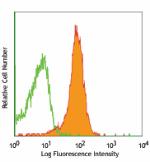
C57BL/6 splenocytes stained with 390 APC -
Biotin anti-mouse CD31
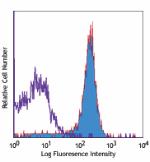
C57BL/6 mouse splenocytes stained with biotinylated 390, fol... -
FITC anti-mouse CD31
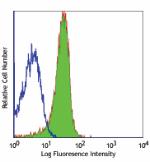
C57BL/6 mouse splenocytes stained with 390 FITC -
PE anti-mouse CD31
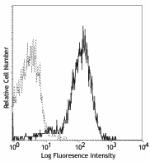
C57BL/6 splenocytes stained with 390 PE -
Purified anti-mouse CD31

C57BL/6 splenocytes stained with 390 PE -
Alexa Fluor® 488 anti-mouse CD31
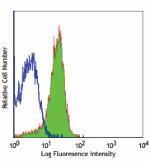
C57BL/6 mouse splenocytes stained with 390 Alexa Fluor® 488 -
Alexa Fluor® 647 anti-mouse CD31
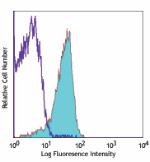
C57BL/6 mouse splenocytes stained with 390 Alexa Fluor® 647 
C57BL/6 mouse frozen liver section was fixed with 4% parafor... -
PE/Cyanine7 anti-mouse CD31
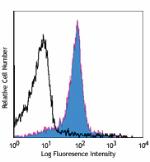
C57BL/6 mouse splenocytes stained with 390 PE/Cyanine7 -
PerCP/Cyanine5.5 anti-mouse CD31
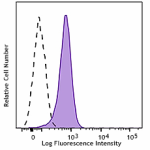
C57BL/6 mouse splenocytes were stained with CD31 (clone 390)... -
Pacific Blue™ anti-mouse CD31

C57BL/6 mouse splenocytes stained with 390 Pacific Blue&trad... -
Brilliant Violet 421™ anti-mouse CD31
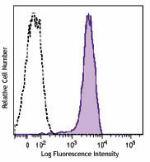
C57BL/6 mouse splenocytes were stained with CD31 (clone 390)... -
Brilliant Violet 605™ anti-mouse CD31
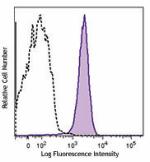
C57BL/6 mouse splenocytes were stained with CD31 (clone 390)... -
Purified anti-mouse CD31 (Maxpar® Ready)
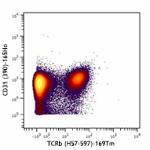
Mouse splenocytes stained with 165Ho-anti-CD31 (390) and 169... -
PE/Dazzle™ 594 anti-mouse CD31
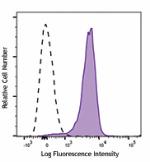
C57BL/6 mouse splenocytes were stained with CD31 (clone 390)... -
Alexa Fluor® 594 anti-mouse CD31
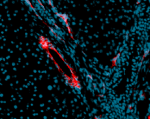
C57BL/6 mouse frozen liver section was fixed with 4% parafor... -
APC/Fire™ 750 anti-mouse CD31
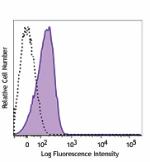
C57BL/6 mouse splenocytes were stained with CD31 (clone 390)... -
Brilliant Violet 785™ anti-mouse CD31
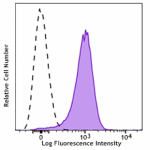
C57BL/6 splenocytes were stained with CD31 (clone 390) Brill... -
TotalSeq™-A0904 anti-mouse CD31
-
TotalSeq™-C0904 anti-mouse CD31
-
Alexa Fluor® 700 anti-mouse CD31
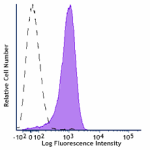
C57BL/6 mouse splenocytes were stained with CD31 (clone 390)... -
APC/Cyanine7 anti-mouse CD31
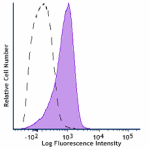
C57BL/6 mouse splenocytes were stained with CD31 (clone 390)... -
Ultra-LEAF™ Purified anti-mouse CD31
-
Brilliant Violet 711™ anti-mouse CD31

C57BL/6 mouse splenocytes were stained with CD31 (clone 390)... -
Spark YG™ 570 anti-mouse CD31
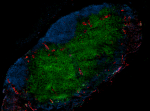
C57BL/6 mouse frozen lymph node section was fixed with 4% pa... -
TotalSeq™-B0904 anti-mouse CD31 Antibody


 Login / Register
Login / Register 











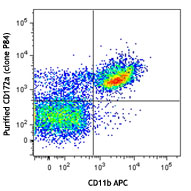

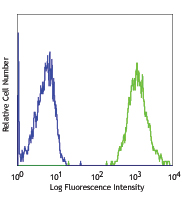
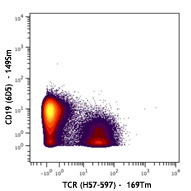







Follow Us